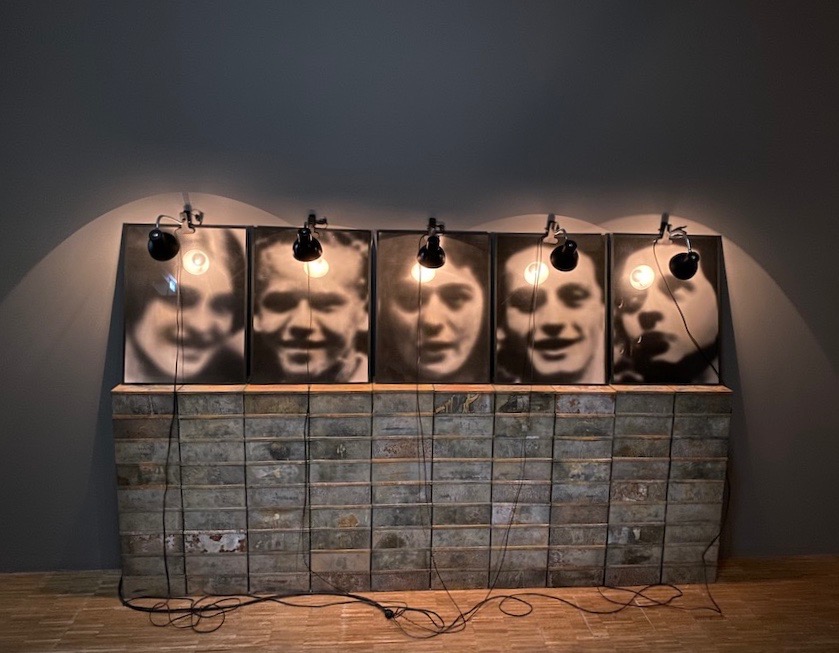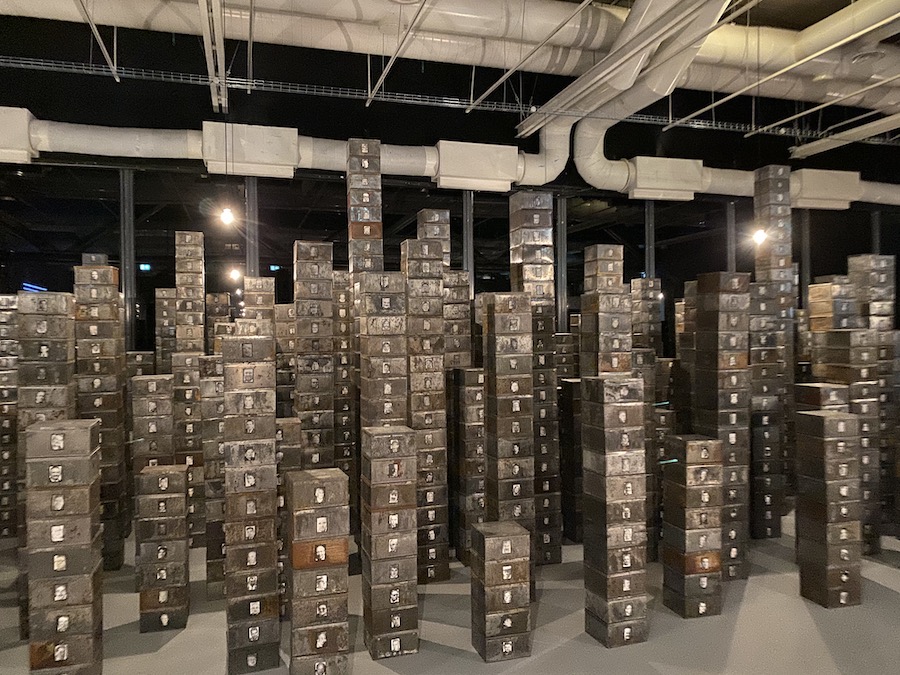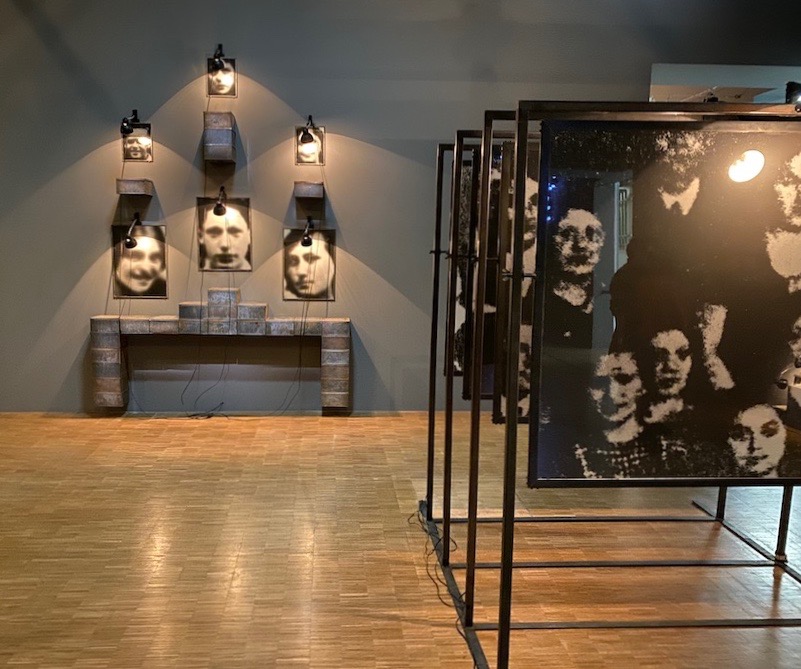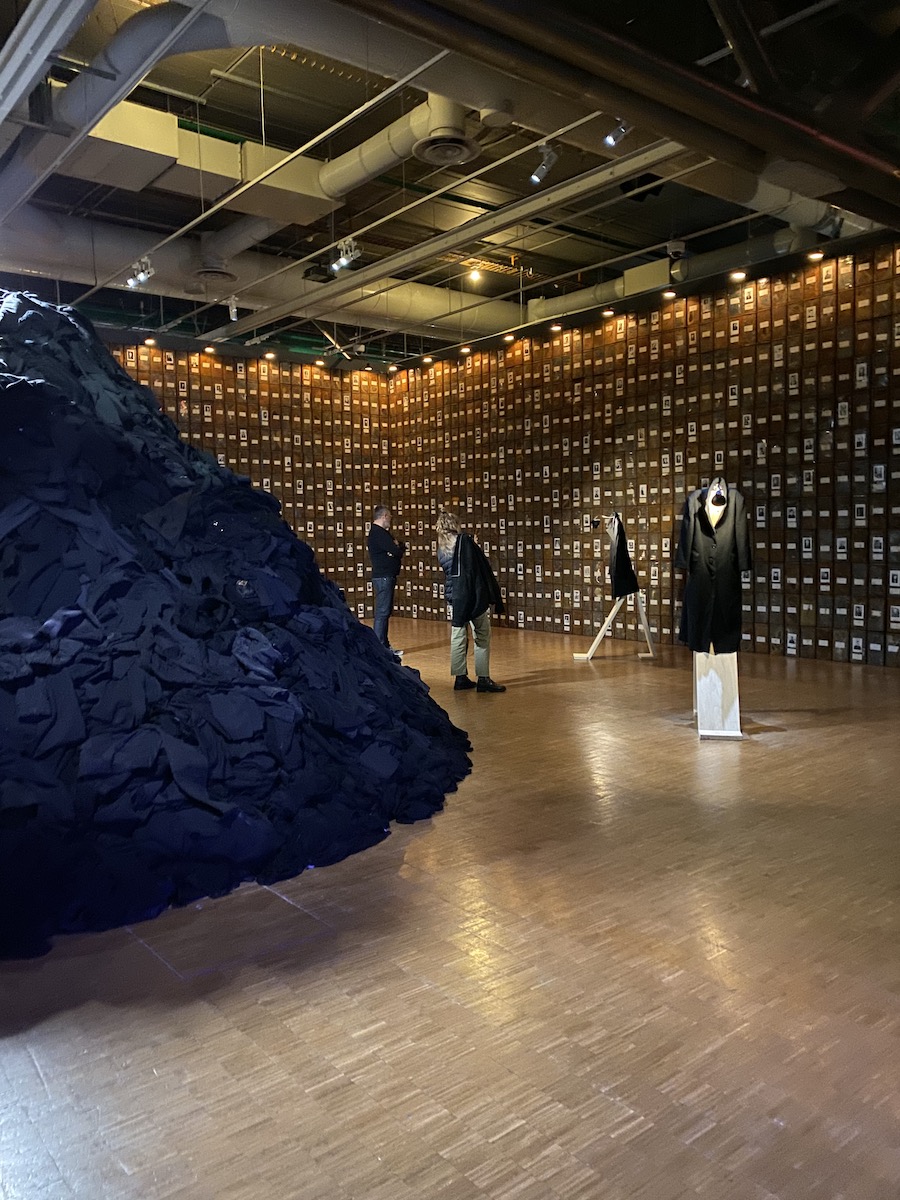French artist Christian Boltanski is an old acquaintance of the Spanish public. His 1988 Madrid exhibition – “El Caso” (The Case) - was a curious and disturbing suite of works expressly conceived of for the Reina Sofia Museum as a follow-up to his “Detective” exhibition of 1972. From articles in El Caso, a weekly journal of crimes and misdemeanors (1952-1997), and the Reina Sofia building’s origins as a hospital, the artist sought to create a world that would unnerve viewers finding themselves surrounded by portraits of the murderers and victims featured on newspaper pages alongside starched white sheets, folded and piled up as if by nurses.
|
Contributing Author: Maira Herrero, |
 |

Christian Boltanski. Photo: Maira Herrero
French artist Christian Boltanski is an old acquaintance of the Spanish public. His 1988 Madrid exhibition – “El Caso” (The Case) - was a curious and disturbing suite of works expressly conceived of for the Reina Sofia Museum as a follow-up to his “Detective” exhibition of 1972. From articles in El Caso, a weekly journal of crimes and misdemeanors (1952-1997), and the Reina Sofia building’s origins as a hospital, the artist sought to create a world that would unnerve viewers finding themselves surrounded by portraits of the murderers and victims featured on newspaper pages alongside starched white sheets, folded and piled up as if by nurses. He created a symbolic and metaphorical world from his own particular understanding of existence where subjectivity is a blurred line between erased , anonymous images and the horror or the evil that can be concealed.

Christian Boltanski. Photo: Maira Herrero
With that exhibition and many others, both before and after, Boltanski has become an artist of note and now, thirty-five years after his first retrospective at the Museé National d'Art Moderne in Paris, the Centre Pompidou pays him homage with a large exhibition featuring the themes that have been his constant companions since 1967: collective memory, the passage of time, loss, oblivion, forgetting, chance and, above all, the human condition.
In his work, Boltanski projects new light onto all that is known, giving the historical fact of the Holocaust a new interpretation by framing it within his quest to interrogate everything, from feelings about existence to an existence that does not respond.

Christian Boltanski. Photo: Maira Herrero
He reminds us of the ephemerality of life versus the definitiveness of death and does so using photographs, videos, tin boxes stacked or embedded in walls like cremation urns in niches, some of them with small portraits, mostly of children. But also with display cases, newspaper clippings, notes, family photos, black monoliths that recall funerals, curtains enclosing tiny spaces, black clothes forming a morbid mountain of death. All this within a labyrinthine journey around the museum that never stops asking questions. Spirits lost in a forest of souls.
Dim lighting, disturbing noises that at times sound human and challenge the silence of the viewer in the face of so much desolation. The staging corroborates and enriches the artist's intention with each of the exhibits, all of which become channels of communication.

Christian Boltanski. Photo: Maira Herrero
“Nothing answers us, but that silence, the voice of that silence, we hear it, and it terrifies us, 'the eternal silence of these infinite spaces' that Pascal speaks of.” Emmanuel Levinas
Boltanski once said that his exhibitions create experiences, seek to move the visitor and let them come to their own conclusions. Never a truer word was spoken.
Christian Boltanski: Faire son temps
Centre Pompidou
13 November 2019 - 16 March 2020
(Translated from the Spanish by Shauna Devlin)
- Christian Boltanski: Doing One's Time - - Alejandra de Argos -



